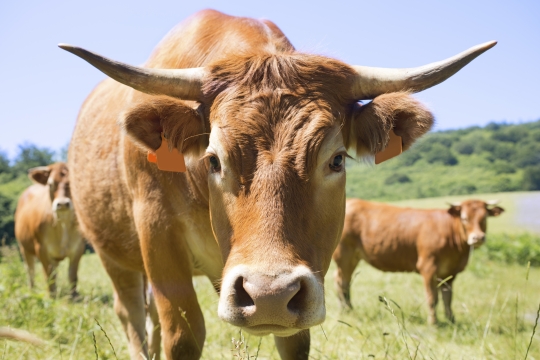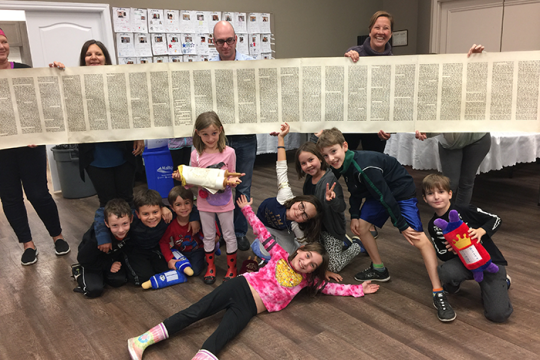More than any other biblical mo’ed (appointed time), Yom Kippur is pre-eminently a Temple-based observance. True, all Israelites were to fast on that day, but the ritual described in Leviticus 16 is exclusively focused on the Temple. It is about the purgation and purification of the sanctuary, the locus of the cultic activity that was deemed to sustain both the Israelite people and the cosmic order. Indeed, the tenth day of the seventh month is mentioned only in the priestly calendars (Lev. 23 and Num. 28-29), not in any of the Torah’s other ritual calendars (Ex. 23:14-17, Ex. 34:18-24, Deut. 16).
The Rabbis, who were profoundly nostalgic for the Temple and looked forward to its restoration (with Rabbis, of course, telling priests how to run things; cf. Mishnah Yoma 1:5), constructed the synagogue services on Yom Kippur to be full of references to, and recollections of, the Temple rituals. The Torah reading for Yom Kippur morning, as we noted previously, is Leviticus 16, the rules for the Temple rituals on that day. Yom Kippur is the only day in the rabbinic liturgical year that ends with a service (Ne’ilah) at the time of ne’ilat hashe’arim, the end of the cultic day in the Temple and the locking of its gates to the public.1 The Musaf, or additional, service is a substitute for the additional sacrifice that was offered in the Temple on shabbatot, Festivals, New Moons, Rosh Hashanah, and Yom Kippur.
On Yom Kippur, the Musaf service becomes the time for recalling once again the Temple-rites of the day, this time reading from the Mishnah instead of the Torah. The Mishnah-tractate Yoma deals with the preparations for, and the ritual activities of, Yom Kippur during the last decades of the Second Temple period. Some of this may be actual historical recollection; some of it may be imaginative reconstruction and rabbinic retrojection. It was customary during the Talmudic period to read during this service significant portions of M. Yoma (if not the entire tractate), particularly those portions dealing with the priestly rites of confession and sacrifice. By the fifth century, some prayer leaders (chazanim) would embellish this reading poetically. Indeed, the earliest synagogue poet (payetan, from the Greek poetes, “poet”) whom we know by name, Yose ben Yose, was the author of several Avodah-poems. These began with a rhetorical flourish, narrating the creation of the world down to the time of the establishment of the Israelite Temple cult and priesthood, and continuing with the narration of the rite of Yom Kippur, incorporating those passages of the Mishnah that gave the formulas for the High Priest’s threefold confession of his own sins and those of his family, those of the priesthood, and those of the Israelite people. It is this poetically embellished narration of the Yom Kippur ritual at the time of the Second Temple that has come to be called Seder Ha’avodah, literally, “the Order of the [Temple] Worship/Service.” It is included in the central Kedushat Hayom benediction of the Musaf Amidah. The discovery of many fragmentary manuscripts of prayer books in the Cairo Genizah, some of which follow the old rite of the land of Israel, has yielded a wealth of liturgical poems, some of which are Avodah-poems.2
The earliest Reform prayer books in nineteenth-century Germany retained both the Musafservice and the Seder Ha’avodah, with one significant change. Instead of including the poem by Yose ben Yose that begins this portion of the service in the Ashkenazic rite, these prayer books use a different Avodah-poem by the same author that is traditionally used at this point in the Spanish-Portuguese rite. The difference between the two poems is essentially stylistic-aesthetic, lying in the fact that the second poem is less linguistically intricate and much easier to understand than the first.3 This substitution, found as early as the very first German Reform congregational prayer book (Hamburg, 1819), is carried forward in virtually all Reform prayer books that retain a poem at this point — all the way down to Gates of Repentance.4 Other Reform prayer books, as early as that of Abraham Geiger (Breslau, 1854) replace the poem with an original vernacular recitation, framing the narration from a contemporary perspective, but retain the Hebrew text from Mishnah Yomaof the High Priest’s confession.
Most, but not all, Reform prayer books in North America eliminated the Musaf service.5 In those prayer books, whatever was retained or refashioned from Seder Ha’avodah was moved to the afternoon service, built up to provide more duration for the liturgical day. Perhaps the most interesting transformation of Seder Ha’avodah — and certainly the most influential for subsequent North American Reform prayer books — is that of David Einhorn, in Olat Tamid (1858). Einhorn encloses the text of the High Priest’s confession (in Hebrew) in a lengthy vernacular interpretive meditation that encapsulates his theology of Israel’s unique religious mission, then and now, as God’s priest-people, whose worship and humane ethical teachings must be an “eternal offering” (olat tamid) on behalf of all humanity. The Temple of old, in contrast to the pagan sanctuaries that “reeked with human blood and shame,” was “the symbol of [God’s] presence among men and the emblem of man’s inborn dignity.” The High Priest, who made confession not only for his own family and tribe, but for all Israel, is portrayed as a paradigm for God’s priest-people, who are to “carry the hope of salvation” and “show the path of life” to all:
O Lord, in Thine inscrutable wisdom, Thou hast destined us to be a light unto the nations. The position which was in the priestly organization of old Israel assigned to the family of Aaron relatively to the rest of the people, hath fallen to our lot in our spiritual relations to all the peoples of the earth. All Israel is constituted the world’s priestly community. Dispersed, as we are, over the whole globe, we are thus enabled and bound to be the proclaimers and witnesses of Thy glory unto all the inhabitants thereof. The duty to bring about atonement and reconciliation in behalf of and in the midst of the house of Jacob, was incumbent on the descendents of Aaron. Ours it is to lead all mankind to the wellsprings of Thy word and thus to prepare and usher in the universal reign of justice and righteousness, under which all the sons of man will be at-one with one another because at peace with Thee…Speed Thou the glorious day of the final at-one-ment of all mankind, when Thy house will be a house of prayer unto all the nations…6
I quote this at some length because it is the classical Reform revaluation of Temple-imagery, and became the model for the original Union Prayer Book II (1895), the primary editor of which was Einhorn’s son-in-law, Kaufmann Kohler. It still echoes in the conclusion of Chaim Stern’s reworking of Seder Ha’avodah in Gates of Repentance (1978).
This latter version (co-written originally by John Rayner and Chaim Stern for the British Liberal Machzor, Gate of Repentance, 1973) is the one most familiar to North American Reform Jews today. It begins with the avodah-poem by Yose ben Yose that is used in the Spanish -Portuguese rite and continues, in the manner of this poem, with an epic, almost rhapsodic retelling of the story of Israel’s history, down to the time of the Yom Kippur rites in the Temple, and then meditating on the positive transformation of Israel’s religious life following
the Temple’s destruction. What is unique about this version is that it is made to flow seamlessly into a late twentieth-century reworking of Eileh Ezkerah, a poetic retelling of the legend of the ten rabbinic martyrs at the time of the Hadrianic wars (132-135 CE; about which more in future columns). This is updated to address the horrors of the Holocaust, the entire sequence concluding with the consolation and hope offered by the founding of the modern State of Israel. The entire treatment reflects both the trauma and exhilaration experienced by diaspora Jews during the course of the Six Day War (1967) and Yom Kippur War (1973) — particularly those old enough at the time to have also experienced the Second World War and the founding of Israel. This mythic narrative has been perceived in recent years to be dated, one of the reasons for the desire to rework this section of the Machzoranew (another reason being its length). A draft of Seder Ha’avodah for the new CCAR Machzor has not yet been released for piloting.
- The locking of the Temple gates at sundown took place every day, not just on Yom Kippur – but it is liturgically memorialized on Yom Kippur, precisely because of the quintessentially Temple -oriented rituals of that day. The understanding of the “locking of the gates” as referring to the gates of repentance and forgiveness at the end of Yom Kippur is a secondary, figurative one.
- Some of these poems have been published and annotated in English (with facing Hebrew text), in Michael D. Swartz and Joseph Yahalom, Avodah: Ancient Poems for Yom Kippur (University Park, PA: Pennsylvania State University Press, 2005).
- It is worth noting that virtually all of the liturgical poetry found in the Yom Kippur services of the Hamburg Temple prayer book of 1819 derives from the Spanish-Portuguese rite, with only two or three poems retained from the Ashkenazic rite. The rationale for this, too, is mostly stylistic-aesthetic. Additionally, the cantors in this synagogue, down to the time of the First World War, were Sephardic and used the traditional Spanish-Portuguese melodies for the Hebrew portions of all the services.
- The one prominent exception is the Yom Kippur volume of Isaac Mayer Wise’s Minhag America (1866).
- Musaf was retained in Leo Merzbacher’s prayer book for Temple Emanuel, New York (1855) and Wise’s Minhag America (1857/1866).
- Quoted from Emil G. Hirsch’s translation and adaption of the German original, Dr. David Einhorn’s Olat Tamid: Book of Prayers for Jewish Congregations (Chicago, 1896), pp. 179, 184-85.
Dr. Sarason is Professor of Rabbinic Literature and Thought and the Associate Editor of the Hebrew Union College Annual. He was ordained at HUC-JIR.


